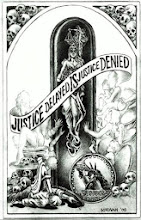
US Military Sets PHaSRs to "Stun"
The US government has unveiled a "non-lethal" laser rifle designed to dazzle enemy personnel without causing them permanent harm. But the device will require close scrutiny to ensure compliance with a United Nations protocol on blinding laser weapons.
The Personnel Halting and Stimulation Response (PHASR) rifle was developed at the Air Force Research Laboratory in New Mexico, US, and two prototypes have been delivered to military bases in Texas and Virginia for further testing.
The US Department of Defense (DoD) believes the weapon could be used, for example, to temporarily blind suspects who drive through a roadblock. However, the DoD has yet to reveal details of how the laser works and has yet to respond to New Scientist’s requests for further information.
Laser weapons capable of blinding enemies have been developed in the past but were banned under a 1995 UN convention called the Protocol on Blinding Laser Weapons. The wording of this protocol, however, does not prohibit lasers that temporarily dazzle a foe.
Permanent harm
"In the past, the problem with lasers of this type has been that they often permanently blind human targets," says Tobias Feakin, an expert at Bradford University's Non-Lethal Weapons Research Project in the UK.
But he says newer systems may avoid this problem by using less powerful laser beams. "This new wave of low-intensity laser weapons do not have a permanently damaging effect, apparently," he told New Scientist.
Several laboratories across the world are working on such weapons. But even low power laser systems can cause eye damage if they are used at close quarters or for extended periods.
The PHaSR may attempt to address safety concerns by automatically sensing its distance from a target. The limited information released by the DoD includes mention of an "eye-safe range finder", which may mean the laser's power is adjusted depending on the distance to the target.
The system is also said to incorporate a "two wavelength laser system", which may be designed to counter goggles that can filter out certain wavelengths of laser light.
Pulsing green light
Neil Davison, another expert at Bradford University, says the situation in Iraq may encourage the US to push for the development of less-than-lethal laser weapons. "They already use bright white lights at vehicle checkpoints in Iraq to dazzle drivers who are approaching too fast," he says.
Several commercial systems capable of temporarily dazzling a target exist. LE Systems, based in Connecticut, US, for example, makes the Laser Dazzler, which resembles an ordinary torch and emits a low power pulsing green laser light. The company says this device has been tested extensively and been shown to cause no lasting eye damage.
The possibility of causing lasting eye damage can be reduced by diffusing the laser beam or rapidly moving it across the target with a series of mirrors.
And the same US military research lab developed another laser weapon more than a decade ago, called the Sabre 203. This device attached beneath the barrel of a normal rifle and emitted a low-power laser light over a range of 300 metres. It was used by US forces in Somalia in 1995 but later shelved because of concerns over safety and effectiveness.


0 Comments:
Post a Comment
<< Home